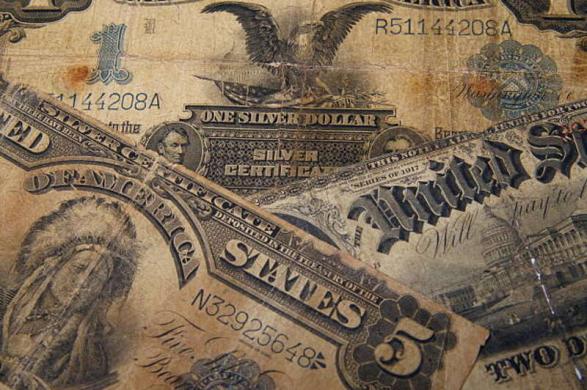Paper money has been a part of the U.S. economy since the colonial period. Back then, paper money was issued by individual colonies rather than any nationally recognized government or agency, making it sometimes unreliable. Throughout history, the role of paper currency in America has gone through several cycles as different trends have come and gone. This article will explore the history of paper money in the United States, from its origin to modern times.
Overview of U.S. Currency:
The Continental Congress issued the first official paper money in the United States during the Revolutionary War on May 10, 1775. It was known as "Continentals," and it was printed as a form of IOUs from the government, backed by gold or silver coins. Continentals were used to pay for supplies and services for the war effort and other public expenses.
However, because any tangible asset did not back these notes, they quickly became worthless after the war due to inflation. In response to this problem, in 1782, Congress authorized the establishment of the Bank of North America (BNA), which would be responsible for issuing paper currency based on its assets. The BNA would also act as a central bank, a lender of last resort to state and local governments.
History of Paper Money in the U.S:

The National Currency Act of 1863 established the first nationally recognized paper currency in the United States. It allowed for establishment of a national banking system and authorized individual banks to issue their notes, all backed by the federal government. These notes were more reliable than Continentals because there was a central bank behind them, so inflation was controlled.
After World War I, Congress passed the Federal Reserve Act, establishing twelve regional Federal Reserve Banks and a new currency called "Federal Reserve Notes." This new currency became the primary legal tender in America and has remained so ever since. The current U.S. dollar is still based on this same system but with some adjustments to reflect changing economic conditions over time.
When Did the U.S. Start Using Paper Money?
The United States began using paper money in the late 1700s, shortly after the Revolutionary War. It wasn’t until 1863 that a nationally recognized legal tender was established; since then, it has become an integral part of American life. The current U.S. dollar is still based on the same system found all those years ago, and it will likely remain so.
Why Was It Adopted Over Coins or Other Forms of Currency?
Paper money was adopted because it was easier to use than coins or other forms of currency. Coins were often much heavier and took up more space, making them difficult to carry around. Paper money was also easier to counterfeit than coins, providing a higher security level. Finally, paper money was more widely accepted than coins or barter due to its convenience and ease of use.
Evolution of U.S Paper Money Design and Security Features:
Paper money has come a long way since its introduction in the late 1700s. The notes have become increasingly security-enhanced, with features like
- watermarks
- color-shifting ink
- holograms.
Additionally, the design of U.S. paper currency has evolved to reflect changes in American culture and history. From portraits of past presidents to symbols of national pride, each bill is designed to tell a story about our nation’s culture and ideals.
How Does the Federal Reserve System Control The Supply Of Money In The Economy?

The Federal Reserve System controls the money supply in the economy through its ability to set interest rates and purchase or sell bonds. By placing a higher interest rate, the Fed can discourage banks from lending, making it more difficult for people to borrow money. This causes the money supply to decrease and helps to reduce inflation. On the other hand, lowering interest rates encourages banks to lend out more money, increasing the money supply and helping stimulate economic growth.
Conclusion:
The history of paper money in the United States is an interesting one. It started as an unreliable form of IOUs from the government during the Revolutionary War but has since evolved into a reliable form of legal tender backed by the federal government’s Federal Reserve System. Additionally, its design and security features have been enhanced over time to make it more challenging to counterfeit while also reflecting American culture and ideals. Finally, the Federal Reserve System controls the money supply in the economy by raising or lowering interest rates. All these factors combine to help keep our economy stable and functioning smoothly.
FAQs:
Q: When did the United States start using paper money?
A: The United States began using paper money in the late 1700s, shortly after the Revolutionary War. It wasn’t until 1863 that a nationally recognized legal tender was established.
Q: Why was it adopted over coins or other forms of currency?
A: Paper money was adopted because it was easier to use than coins or other forms of currency. Coins were often much heavier and took up more space, making them difficult to carry around. Paper money was also easier to counterfeit than coins, providing a higher security level. Finally, paper money was more widely accepted than coins or barter due to its convenience and ease of use.
Q: How does the Federal Reserve System control the money supply in the economy?
A: The Federal Reserve System controls the money supply in the economy through its ability to set interest rates and purchase or sell bonds. By placing a higher interest rate, the Fed can discourage banks from lending, making it more difficult for people to borrow money. This causes the money supply to decrease and helps to reduce inflation.




